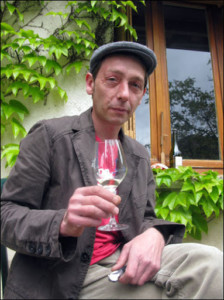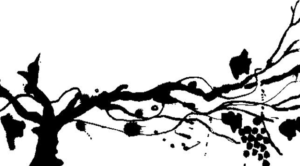Domaine Labet

Julien Labet
About
Owners & winemakers: Charline, Julien, and Romain Labet
Vineyards: 14ha, encompassing 45 different parcels in four different communes
Vineyard management: Certified organic since 2010
Soils: Limestone and marl
Grapes grown: Chardonnay, Savagnin, Pinot Noir, Gamay, Trousseau, Poulsard
Annual production: 60,000 bottles
Quick facts:
- Domaine Labet produces around thirty different wines each year, in order to best showcase the particular terroir of each parcel.
- All of the vineyards are certified organic, and the only treatments are based on copper, sulfur, whey, and homeopathic teas.
- “These are vines which speak through the wine, each one on a different terroir, each one with its own personality. All tell the story of a tiny piece of the planet. The story of a place, of a climate, of a soil, of a plant, of a grape variety, and of a season. Winemakers are nothing more than the interpreters of what has been written by nature.” – Domaine Labet
Domaine Labet was founded in the 1950s by Jean Labet, the grandfather of siblings Charline, Julien, and Romain, who run the estate today. It was originally a polycultural farm devoted mainly to dairy cows (for milk used to make Comté cheese), as was typical for the region at that time. His son Alain joined him in the 1970s and began focusing more on viticulture, purchasing distinctive old vineyard sites from neighbors. Very early on, he was interested in the concept of terroir, particularly the little-known and under-appreciated terroirs of the Jura. After all, wine, according to the Labet family, is “one of the rare ‘foodstuffs’ that can be a catalyst of history, culture, philosophy, and humanity.”
This fascination led him to a parcel-by-parcel approach to the wines, which defines Domaine Labet’s style today. Inspired by the principle of crus in Burgundy, each “cuvée parcellaire” is produced from one single vineyard. Through this wine, the personality of the grape, the place, the soil, and the terroir can express itself. Each year, they produce eighteen single vineyard cuvées, six red and twelve white. Each cuvée is named for the “lieu-dit” (named vineyard site) where the grapes are grown. Most of these cuvées come from older vines (50-100 years old), which are distinctive because they were planted via massale selection–before purchasing clones from a nursery was even an option. Therefore, instead of a field of genetically-identical plants, each vine has its own personality–maybe one ripens a bit earlier, while another tends towards higher acidity; others may be more susceptible to botrytis, or produce grapes that are slightly more floral, or citrusy, or tannic… Each one adds a layer of complexity to the wine.
Work in the cellar is simple–it’s mainly a question of timing, through seasons and lunar cycles. “Wine is the work of the yeasts,” as the Labet family sees it. “They are the artisans at the origin of wine, transforming grape juice into wine by the alchemy of fermentation.” All of the Labet wines are the result of spontaneous fermentations by the indigenous yeasts that are naturally present in each vineyard. Different from one parcel to another, and from one vintage to another, they play an important role in the personality and the expression of each wine and each terroir.
Most of the Labet wines are aged on the lees, in 4-15 year old 228L barriques. While they do make a few wines in the historic “non-ouillé” (oxidized) style, most of their wines are “ouillé,” or “topped up” in barrel, in order to showcase the terroir with more freshness and precision. The wines are not clarified, chaptalized, or acidified, and most cuvées are not filtered. The Labet siblings have been experimenting with “sans soufre” wines since 2005, and today they vinify without sulfur but may add a small dose at bottling depending on the cuvée or the vintage.

